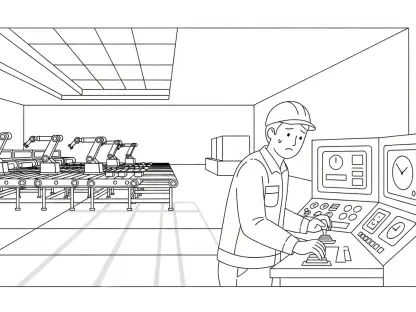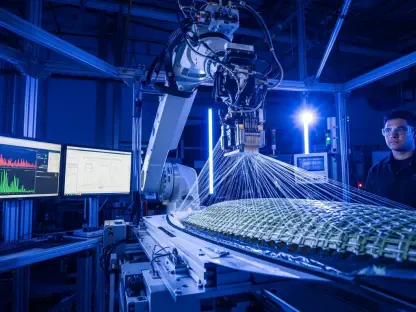Kwame Zaire, a prominent figure in the aerospace manufacturing sector, brings a wealth of knowledge to the table regarding electronics, equipment, and production management. As a thought leader in predictive maintenance, quality, and safety, Zaire offers deep insights into the collaboration between Reliance Infrastructure and Dassault Aviation to manufacture Falcon 2000 business jets in India. This partnership is set to transform India’s aerospace landscape by positioning it as a key player in the global aerospace value chain.
What led to the strategic partnership between Reliance Infrastructure and Dassault Aviation?
The partnership was primarily driven by the mutual goal of expanding Dassault’s manufacturing capabilities into new territories while leveraging Reliance Infrastructure’s strong presence in India. Dassault’s vision to diversify production locations aligns well with India’s robust industrial landscape and the ‘Make in India’ initiative, making it an ideal collaboration to enhance competitiveness while optimizing production costs.
Can you explain the significance of setting up the Falcon 2000 assembly line in Nagpur, Maharashtra?
Establishing the Falcon 2000 assembly line in Nagpur is monumental for several reasons. It represents the first instance of these jets being assembled outside France, marking India’s entry into an elite group of countries manufacturing business jets. This step not only emphasizes India’s growing influence in the aerospace sector but also supports local job creation and skill development, critical elements of India’s economic strategies.
How did the joint venture, Dassault Reliance Aerospace Limited (DRAL), come about?
Dassault Reliance Aerospace Limited, formed in 2017, resulted from a strategic decision by both companies to capitalize on each other’s strengths. Dassault needed a trusted partner to meet increasing global demand, and Reliance offered the necessary infrastructure and regional expertise. This synergy is rooted in shared objectives of innovation and excellence in aircraft manufacturing.
What makes the Dassault Falcon 2000 distinct in the market of business jets?
The Falcon 2000 stands out due to its exceptional range, fuel efficiency, and luxurious cabin design. It offers a unique blend of performance and comfort, positioning it as a premium choice for corporate clients. The jet’s sophisticated technology and reliability are other key differentiators that appeal to business aviation customers globally.
Why is the production of the Falcon 2000 outside France considered significant?
Producing the Falcon 2000 outside France signifies a strategic shift for Dassault, reflecting their confidence in and commitment to India as a manufacturing hub. It underscores a global trend toward diversifying production to mitigate risks associated with political or economic instability and to tap into local expertise and resources.
How does this venture fit into the ‘Make in India’ initiative?
This venture aligns perfectly with the ‘Make in India’ initiative by fostering indigenous manufacturing capabilities and enhancing the skill sets of the local workforce. It symbolizes a major step forward in positioning India as a central node in the global aerospace supply chain, potentially attracting further investment and fostering technological advancements.
What role will DRAL play in the Falcon 6X and Falcon 8X programs?
DRAL is expected to become a center of excellence for Falcon jets, extending its responsibilities to assembling the Falcon 6X and 8X models. This transfer of technological know-how and critical production functions will boost local expertise in handling next-generation aviation technologies and enhance India’s role in the international aerospace industry.
Could you elaborate on the expected hiring process over the next decade due to this assembly line?
Over the next decade, DRAL anticipates hiring several hundred skilled workers, including engineers and technicians, to support its growing operations. This hiring spree will not only support the factory’s output but also help cultivate a highly skilled labor force, contributing positively to the region’s economic growth.
How will the assembly line cater to both Indian and international demand for business jets?
The new assembly line is strategically designed to meet both domestic and international market demands. It is equipped with cutting-edge technology to ensure high-quality production of Falcon jets, thus allowing Dassault to efficiently manage and fulfill orders from both Indian corporate clients and international customers seeking reliable business aviation solutions.
What are some of the challenges you anticipate in setting up this assembly line in India?
One of the primary challenges lies in bridging the skill gap; it is crucial to train the local workforce to align with global standards in aerospace manufacturing. Additionally, ensuring a steady supply chain and adapting to regulatory frameworks might pose initial hurdles. However, the collaboration’s robust strategy and long-term focus promise to mitigate these challenges effectively.
How does this partnership impact the global aerospace value chain?
By establishing a production base in India, Dassault effectively broadens its footprint in the global aerospace value chain. This move introduces a new dimension of flexibility and resilience to their operations, enhancing supply chain efficiency while increasing India’s relevance and competitiveness on the international stage.
Why is India an ideal location for expanding Falcon assembly programs?
India offers a compelling mix of advanced industrial capabilities, government support, and a growing domestic market. Its geostrategic location further enables efficient access to emerging markets in Asia, Africa, and the Middle East. Coupled with a dedication to modernizing manufacturing infrastructures, these factors make India an attractive base for expanding aerospace assembly programs.
What is your forecast for the future of such international aerospace partnerships?
Considering the dynamic shifts in global economies and technology landscapes, I foresee a trend towards more such international collaborations. Companies will increasingly look to diversify production locations to enhance resilience and accessibility to emerging markets. These partnerships will not only drive innovation but also catalyze economic growth and technological advancement across borders.









